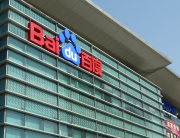The use of domain masking, despite many SEOs warning against the practice, is still being used today. We have also recently seen a few examples of Meta Refreshing to get rankings.
We have recently been speaking to a client that is undertaking meta tag refreshing in order to achieve SEO rankings for target keywords. This is a highly risky strategy to adopt and if Google determine what is happening it can cause the website to be penalised and lose many places in the SERPs, or be banned completely.
So what are is domain masking, domain mirroring, domain cloaking and meta tag refreshing?
Domain Masking or Pointing
This is where you serve content on a domain but it is actually from another domain. For example, say I have a really-cool-domain.co.uk that I want to use for some great content I have, but I want the content to remain on my-main-website.co.uk, but I feel that users will have a better user experience if they see the content published under the domain name really-cool-domain.com. You can use domain masking to achieve this.
However this does cause duplicate content issues as both domains will be serving the same content. This can lead to penalties so it is advised not to implement.
Domain name mirroring and cloaking are also similar names for the same approach.
Meta Refresh Tag
This is a dangerous tactic. This is where people by domain names to get higher rankings in Google but the content is forwarded to the content of another website when clicked. For example, I want to appear as high as possible in Google for the search term really cool domain so I purchase really-cool-domain.co.uk. Within the meta data of the HTML page for this site I add a meta refresh tag that after two seconds redirects me to my-main-website.co.uk.
This technically is not duplicate content, however it fools Google into thinking that the really-cool-domain.co.uk domain is most relevant to the search query, even though it is effectively providing a gateway to the actual content.
This is a clever tactic, one that does work, but is very risky to adopt and if caught will lead to a penalty. We saw a company a few years ago in the pay day loan vertical that got to position two for pay day loans with this very strategy.
The Options for these scenarios, that are compatible with Google, are:
1. Run two sites separately with independent, quality content
2. 301 Redirect the really-cool-domain.co.uk to my-main-website.co.uk.
3. Implement a Rel=canonical tag and populate both sites independently with the duplicate content. That way Google will be notified that it is duplicate content, and only one of the site will rank for the content.
4. Continue with the current strategy and cross all fingers, toes and legs that you will not get penalised.
5. Continue with the masking approach but exclude of one domain using the robots.txt file.
6. Combine the content into one website, or put the content only on one of the domains.









